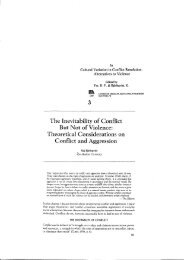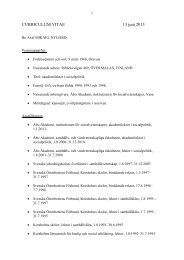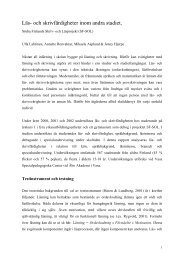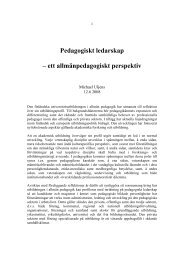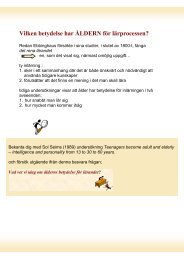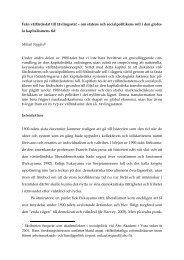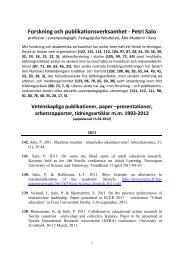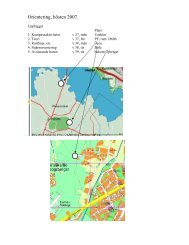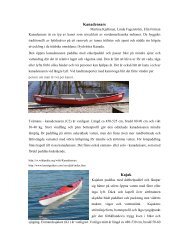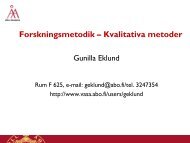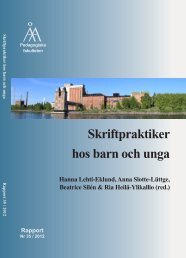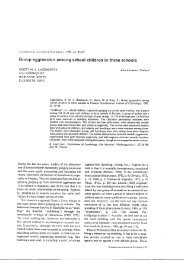Parties, Candidates and Citizens On-Line - Åbo Akademi
Parties, Candidates and Citizens On-Line - Åbo Akademi
Parties, Candidates and Citizens On-Line - Åbo Akademi
Create successful ePaper yourself
Turn your PDF publications into a flip-book with our unique Google optimized e-Paper software.
Appendix A: detailed description of the QCA technique<br />
In practice, the QCA analysis starts with a construction of a so-called ‘truth table’ in which the<br />
theoretically possible combinations of the values of dichotomous independent variables are depicted along<br />
with the empirical outcomes on a dichotomous dependent variable found in the case material (see Ragin<br />
1989: 90). The truth table contains information about the settings in which the dependent variable occurs<br />
or does not occur. In describing these settings, two logical separators are used; Boolean addition <strong>and</strong><br />
multiplication. Addition st<strong>and</strong>s for a logical or <strong>and</strong> multiplication st<strong>and</strong>s for a logical <strong>and</strong>. Also, the absence<br />
of an independent variable is indicated in lower-case letters, <strong>and</strong> the presence is indicated in upper-case<br />
letters. Together the settings form a Booelan expression as follows:<br />
F = 1 when Abc+aBc+abC+ABc+AbC+aBC+ABC<br />
This expression is called a ‘primitive’ or unreduced Boolean expression. The expression shows all<br />
combinations of variables in which the dependent variable occurs. The Boolean technique then proceeds<br />
through combining expressions which only differ in one causal condition but produce the same outcome<br />
<strong>and</strong> reducing them into simpler expressions. For instance, Abc <strong>and</strong> ABc only differ in the B term but<br />
produce the same outcome, thus B is considered redundant for the outcome on the dependent variable,<br />
<strong>and</strong> the expression is reduced to Ac. This is repeated for all possible pairings until no further reductions<br />
are possible. In the hypothetical scenario this would result in six reduced expressions: Abc+ABc=Ac;<br />
Abc+AbC=Ab; aBc+ABc=Bc; abC+AbC=bC; ABc+ABC=AB <strong>and</strong> AbC+ABC=AC. Thereafter, the<br />
process is repeated with the reduced expressions in order to find even simpler expressions. This would<br />
result in two further reductions; Ac+AC=A <strong>and</strong> Ab+AB=A. Thus, in this hypothetical scenario,<br />
Condition A seems to be sufficient for the occurrence of the dependent variable.<br />
57



